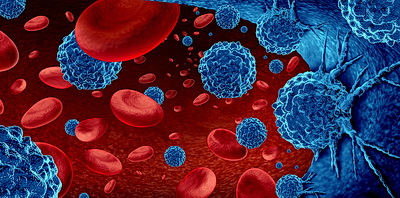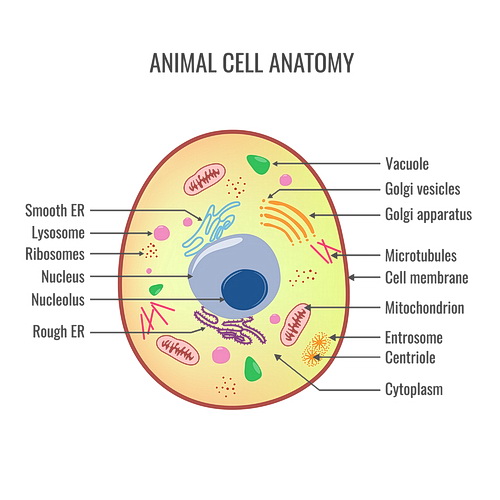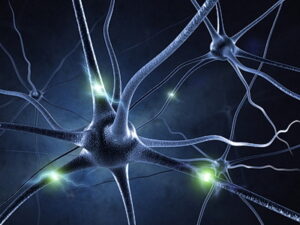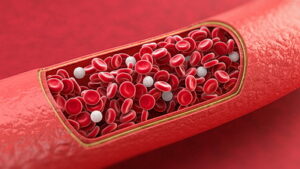
If you don’t have cells in your body then you are dead. Sorry for this unexpected scare but that is the plain and simple truth. However, not to worry.
You do have cells and so does every living thing on this planet!
With that said, let’s talk about what makes cells turn us into living, breathing organisms. Additionally, we will discuss how our cells can be altered when attacked by foreign entities (viruses) and subsequently cause them to act differently, resulting in a danger to the host (you). Let’s start from the beginning.
What is a Cell?
Each cell has its own sets of components that contain the materials that sustain life and each cell has a specific job to do, which in turn, keeps us healthy.  The structure of an animal cell. Eukaryotic cell structures show the nucleus, cytoplasm, Golgi apparatus, mitochondria, membrane, centrosome, and ribosome.
The structure of an animal cell. Eukaryotic cell structures show the nucleus, cytoplasm, Golgi apparatus, mitochondria, membrane, centrosome, and ribosome.
The two components that many of us are familiar with are the cell membrane, which is the separation between the interior and exterior of the cell, and the nucleus, which is referred to as the control room of the cell. You can learn more about the parts of a cell here.
Inside a cell, there are many different types of organelles (parts within the cell). For example, they have proteins that help you digest food, while others keep your heart pumping blood. Some cells produce new cells for growth and then some replace dead or injured cells. There are also cells designed to assist in muscle movement, respiration, and reproduction.
Types of Cells
Since cells are classified by their function, let’s take a look at what each category is designed to do.
Nerve Cells

Nerve cells are the brain’s messengers that send signals to other parts of the body. They also form new thoughts in our brains and produce memories. Damaged nerve cells cause cell deterioration, which can result in a wide range of symptoms.
For example, you can be subjected to dementia, neurological issues, tremors, seizures, and to name a few. Sufficient nerve cell damage in any part of the body is one of the leading causes of disability in adults.
Proper exercise and eating brain foods such as fatty fish, salmon, trout, and sardines are rich sources of omega-3 fatty acids, which are very beneficial for brain growth and overall health. Eating the right foods helps reduce oxidation in the brain. By reducing oxidation (removing free radicals), you will have fewer damaged brain cells.
Blood cells

Blood cells are part of the circulatory system and carry oxygen and nutrients, like sugars and proteins to different parts of your body. These cells fight off infection by destroying bacteria and viruses.
There are three types of blood cells: erythrocytes (red blood cells), leukocytes (white blood cells), and platelets.
Erythrocytes carry oxygen throughout the body, while leukocytes play an important role in fighting infection. Platelets help your blood clot to stop bleeding when you get injured or cut.
Muscle Cells
Muscle cells produce and store energy for the body. They’re called muscle cells because they provide muscle strength and power.
Cells that Produce New Cells
These are also called stem cells because they can change into other types of cells. One example is a skin stem cell, which can create red blood cells, white blood cells, and other types of skin cells.
Cells that Fight Infections and Regulate Metabolism
The immune system is made up of several different types of cells. White blood cells (leukocytes) are the most important type of cell involved in fighting infections (mutated cells that can cause damage).
The white blood cells live in a network that surrounds your body and then move to where they’re needed to fight invaders, but sometimes they need help, as you need to have a sufficient amount of antibodies to fight off infections. Viruses are, quite simply, infections in your body.
External Help to the Rescue
Vaccines such as the Pfizer COVID-19 vaccine inject antibodies into your body to help fight off these mutations. In the case of the Covid virus spike proteins – are defective cells that try to attack your healthy cells and mutate them. As more and more healthy cells become defective, you may begin to feel ill.
The other type of cell that fights infections is the neutrophil. Neutrophils are larger than white blood cells and can kill more invaders than antibody-producing cells can.
There are cells called a macrophage, which helps regulate metabolism by removing waste from your bloodstream. These cells also help produce antibodies to fight invaders, such as keratinocytes that protect us from injury.
Cell Summary
Cells are microscopic entities that are made up of proteins. They are the lifeline of all living organisms and are categorized by the functions they perform. There are many types of cells, grouped by their function. Muscle cells, blood cells, and nerve cells to name a few.
The COVID-19 virus contains a series of defective cells that contain spike proteins that attack healthy cells and cause them to mutate. This action diminishes the healthy cell’s function and subsequently causes your body’s health to deteriorate.
To keep these healthy cells from being mutated, white blood cells send antibodies to block the viral cells from attacking them, but sometimes, more antibodies need to be injected into your body (via a vaccine) to fight off these mutations, such as for the flu or Covid.
